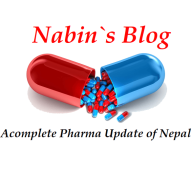
Insulin is a drug that is used to control glucose in patients with diabetes mellitus. It is the only parenteral antidiabetic agent available for exogenous replacement of low levels of insulin.
Insulin is the hormone produced by the pancreatic beta cells of the islets of Langerhans. It is released into circulation when the levels of glucose around the cells arise. Insulin circulates through the body and reacts with specific insulin receptor sites to stimulate the transport of glucose into cells to be used for energy (facilitated diffusion).
Originally prepared from pork and beef pancreas, virtually all insulin is prepared by recombinant DNA technology now. This is a purer form of insulin and is not associated with sensitivity problems that many patients developed with the animal products.
Disease Spotlight: Diabetes Mellitus
- Diabetes Mellitus (literally, “honey urine”) is a condition wherein there is a complex disturbance in the metabolism of carbohydrates, proteins, and fats. This alteration results in thickening of the layer below the endothelial lining of the blood vessels. This, in turn, causes narrowing, vessel remodeling, and decreased blood flow through vessels.
- Most frequent clinical signs include hyperglycemia (fasting blood sugar of >106 mg/dL) and the presence of sugar in the urine (glycosuria).
- Diabetes is classified into two: type 1 and type 2. Type 1 diabetes is common in younger people and is connected with cases of viral destruction of beta cells of the pancreas. On the other hand, type 2 is adult-onset and is associated with not enough insulin to maintain glucose control.
- Hyperglycemia (high blood sugar) results when there is an increase in glucose in the blood. Clinical signs and symptoms include fatigue, lethargy, irritation, glycosuria, polyphagia, polydipsia, and itchy skin (from the accumulation of wastes that liver cannot clear).
- Hypoglycemia is a blood glucose concentration lower than 40 mg/dL and can occur in many clinical situations like starvation and overtreatment of hyperglycemia. Manifestations include headache, paresthesias, hunger, and diaphoresis.
Therapeutic Action
The desired and beneficial action of insulin is:
- Insulin replaces endogenous insulin. It is the only parenteral antidiabetic agent available for exogenous replacement of low levels of insulin. It reacts with the receptors of the cells to facilitate transport of various metabolites and ions across cell membranes and stimulates the synthesis of glycogen from glucose, of fats from lipids, and of proteins from amino acids.
Indications
Insulin is indicated for the following medical conditions:
- Treatment of type 1 diabetes
- Treatment of type 2 diabetes when other agents have failed
- Short-term treatment of type 2 diabetes during periods of stress
- Management of diabetic ketoacidosis, hyperkalemia, and marked insulin resistance
Pharmacokinetics
Here are the characteristic interactions of insulin and the body in terms of absorption, distribution, metabolism, and excretion:
| Route | Onset | Peak | Duration |
| Regular | 30-60 min | 2-4 h | 6-12 h |
| NPH (Humulin N) | 1-1.5 h | 4-12 h | 24 h |
| Ultralente (Humulin Ultralente) | 4-8 h | 10-30 h | 20-36 h |
| Lispro (Humalog) | <15 min | 30-90 min | 2-5 h |
| Aspart (Novolog) | 10-20 min | 1-3 h | 3-5 h |
| Glargine (Lantus) | 60-70 min | None | 24 h |
| Glulisine (Apidra) | 2-5 min | 30-90 min | 2 h |
| Detemir (Levemir) | 1-2 h | 3-6 h | 5.7-23.3 h |
T1/2: varies with each preparation, Metabolism: cellular level
Contraindications and Cautions
The following are contraindications and cautions for the use of insulin:
- No contraindications as it is a replacement hormone. However, close monitoring is needed among pregnant and lactating women to adjust the dose accordingly. It is the drug of choice for management of diabetes during pregnancy.
- Insulin does enter breast milk but it is destroyed in the GI tract and does not affect the nursing infant.
- Insulin-dependent mothers may have inhibited milk production because of insulin’s effects on fat and protein metabolism.
Adverse Effects
Use of insulin may result in these adverse effects:
- hypoglycemia and ketoacidosis
- local reactions at the injection site (lipodystrophy).
Interactions
The following are drug-drug interactions involved in the use of insulin:
- MAOIs, beta blockers, salicylates, alcohol. Increased glucose reduction
- Beta blockers. Blocking the SNS also blocks many of the signs and symptoms of hypoglycemia, hindering the patient’s ability to recognize problems.
- Various herbal therapies (juniper berries, ginseng, garlic, fenugreek, coriander, dandelion root, celery). Increased risk of developing hypoglycemia.

